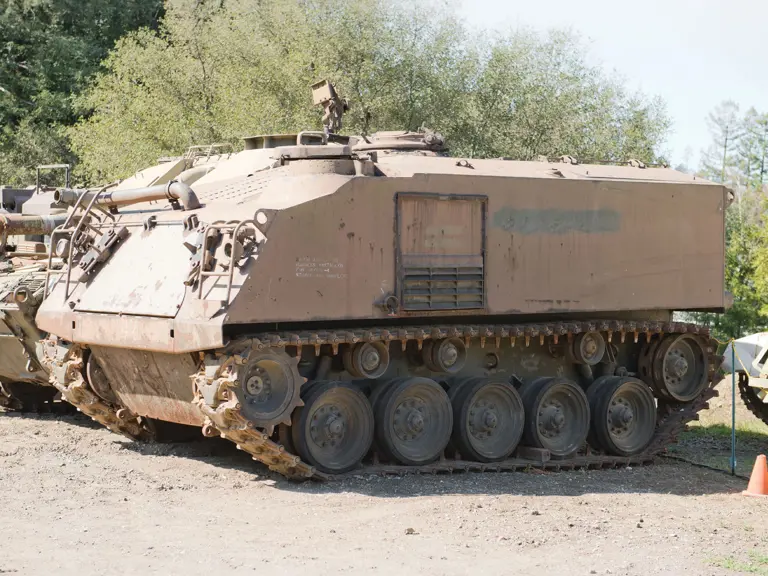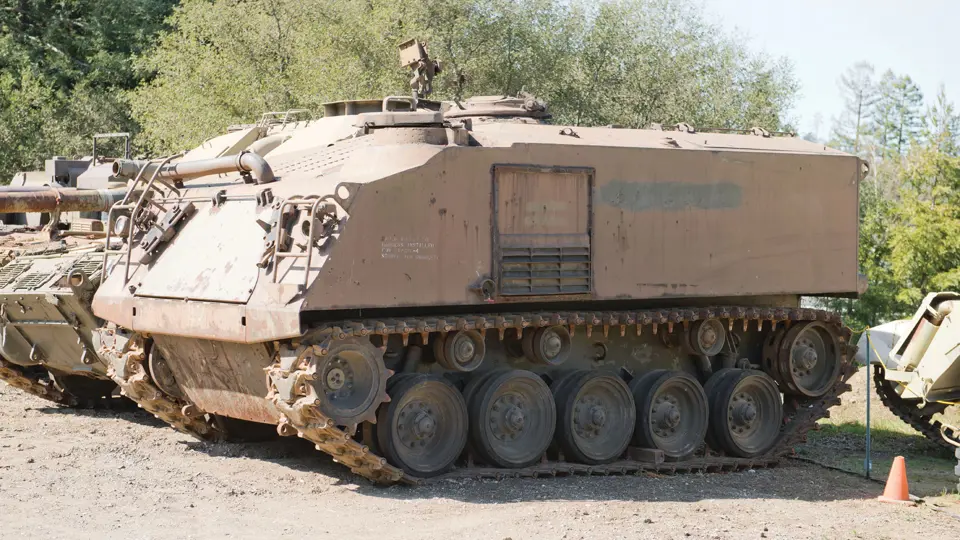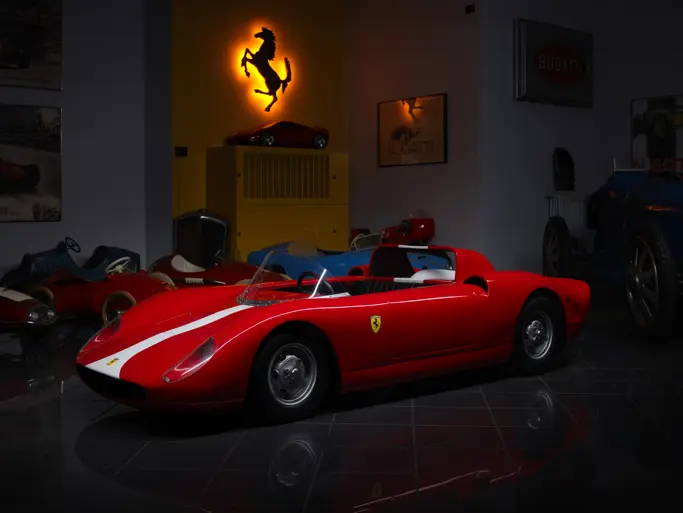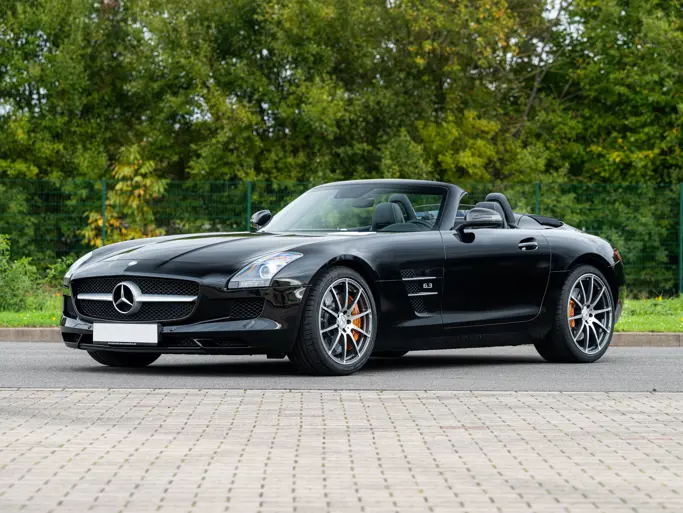 | Portola Valley, California
| Portola Valley, California
Weight: 20.7-tons (18,824-kg)
Length: 17' 0” (5.18-m)
Width: 9' 4” (2.84-m)
Height: 9' 0” (2.74-m)
Crew: 12 (driver, commander, 10 infantrymen)
Armor:
Hull front: .5” (13-mm)
Hull sides: .625” (16-mm)
Weapons:
-Primary
1x .50-cal M2HB machine gun
-Ammunition
900x .50-cal
Engine: Continental AOS-895-4, 6-cylinder gasoline, 295-hp
Power/weight: 14.3-hp/ton
Fuel Capacity: 150-USG (567-l)
Range: 115-miles (185-km)
Speed: 44-mph (70-km/h)
The vehicle for offer here, M75 Armored Personnel Carrier, serial number 543, U.S. Army registration number 40229174, was built by International Harvester Company (IHC), probably in late 1951 or early 1952. It is in need of a complete restoration, inside and out. This vehicle is currently inoperable. All driver's controls other than the dashboard are present. The commander's cupola is in good condition, but needs new vision blocks. The troops seats are present. The tracks and roadwheels are in good shape. Other items present include the engine, transmission, spare track blocks, headlights, taillights and fuel tanks.
The M3A1 half-track was the primary armored personnel carrier (APC) in service with the U.S. Army at the end of World War II. While it was reliable and easy to operate, it's open-topped configuration exposed the troops it carried to artillery air bursts, fire from upper levels of buildings and hand grenades being tossed into it. These deficiencies were addressed post-war during development of a new APC.
Development of the T18 series began in September 1946. The basic design was essentially an armored box in which an infantry squad could ride into battle fully protected from small arms and artillery fragments. The driver was seated at the left front of the vehicle with the commander's position located in the center. Two doors were located at the rear of the vehicle for the infantry squad to enter and exit through. Additional hatches were located in the hull roof. After the usual design changes over a period of nearly five years, production of the T18E1 as it was then known as, began in 1951. Soon type standardized as the M75, 1,780 were produced by IHC and FMC with 1,000 being built by IHC and the balance by FMC.
The M75 first saw combat with U.S. forces in the last couple of months of the Korean War. It served with the U.S. Army up until the mid-1950s when it was replaced by the M59. The M75 also saw service with some our NATO allies and the Jordanian Army.
Transport Cost to Storage: $2,640





